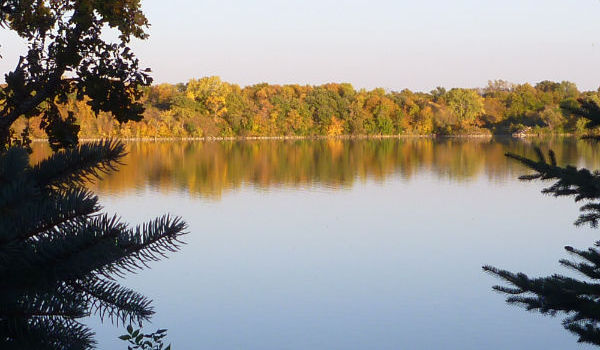Water Quality Testing
 The PLC and its predecessor organization, the Greater Pickerel Lake Association, have worked with the Northeast Glacial Lakes Project to conduct comprehensive water quality testing. We probably have the most comprehensive historical data regarding water quality of any lake in northeast South Dakota. This database is extremely valuable in gauging the health of the lake, trends in water quality, and potential sources of water quality problems.
The PLC and its predecessor organization, the Greater Pickerel Lake Association, have worked with the Northeast Glacial Lakes Project to conduct comprehensive water quality testing. We probably have the most comprehensive historical data regarding water quality of any lake in northeast South Dakota. This database is extremely valuable in gauging the health of the lake, trends in water quality, and potential sources of water quality problems.
More recently, the PLC working in partnership with NE Glacial Lakes Watershed Improvement and Protection Project, completed an extensive survey of the Pickerel Lake shoreline (Shoreline Survey Report 2018). These findings, along with our historical water quality data, laid the foundation for a comprehensive review and consultation by RMB Environmental Laboratories, Inc. The results are summarized below and the entire report is available (Pickerel Lake Water Quality 2019). Please also check the 2022 water quality results. (Pickerel Lake Water Quality 2022)
Key Findings and Recommendations
Monitoring Recommendations (July 2020)
Transparency monitoring at the primary sites should be continued annually. It is important to continue transparency monitoring, possibly weekly but at least monthly every summer to enable year-to-year comparisons and trend analyses. Weekly volunteer secchi disc readings would help identify the occurrence and duration of algae blooms and any trends over time. Phosphorus, dissolved phosphorus, Total Kjeldahl Nitrogen, and chlorophyll a monitoring should continue, as the budget allows, to track future water quality trends.
Overall Conclusions
Pickerel Lake is a eutrophic lake (TSI = 54) with stable total phosphorus and transparency trends, in the last 18 years. The total dissolved phosphorus levels have been increasing over time indicating a declining water quality trend with 99.9% confidence. Recent chlorophyll measurements are higher than results observed in the 1990s.
Approximately one eighth of the lakeshed is protected (13.5%), which includes wetlands and open water. About 15% of the lakeshed is disturbed, which is mainly cropland, lakeshore development, and low density developed areas like roads. Undisturbed areas in the lakeshed should be protected by paying landowners to maintain the existing habitat and utilizing conservation easements through groups such as Ducks Unlimited or other state, local, or federal groups.
Phosphorus Loading and Priority Impacts
Pickerel Lake is at a disadvantage because it retains much of the nutrients and sediment that wash into it since there is only one outlet. There is one additional lakeshed that contributes water from upstream areas and several streams flow into Pickerel Lake. This means that the land practices upstream likely impact to the lake’s water quality.
Only 6% of the lakeshed is covered with wetlands, which does not provide very much water storage and filtration. Protecting and restoring wetlands will help maintain water levels and water storage, reduce flooding, and filter runoff during large storm events.
Pickerel Lake has a moderate amount of surface inflow and some springs discharging groundwater into the lake.
The large lake size and deep depths give the water a moderate residence time in the lake, likely 5 or more years. Most lakes retain at least half of the nutrients that flow into the lake in their bottom sediments. Pickerel Lake likely retains 75% of the annual nutrient load into the lake.
Data show that summer algae blooms are now worse than they were in the 1990s. It is likely that phosphorus release from the lake bottom sediments is causing the summer algae blooms that are being observed. The cumulative effects from the large watershed and land practices have aged the lake, resulting in greater oxygen demand in the deep portions of the lake. As the bottom water layers run out of oxygen, dissolved reactive phosphorous is released from the lake sediments. This phosphorous is available for uptake and causes aquatic plant and algae growth. An analysis of the dissolved phosphorous data collected at the lake bottom shows an increase with current levels four times higher than in the 1990s.
Best Management Practices Recommendations
The management focus for Pickerel Lake should be to protect the water quality by implementing nutrient and runoff reduction BMPs in the lakeshed and investigating the possibility for hypolimnetic withdrawal. Efforts should be focused on managing and/or decreasing the impacts caused by agriculture, current and additional development, nutrient-saturated wetlands, and impervious areas. Project ideas include treating runoff in regional nutrient removal ponds, conservation cropping systems, hypolimnetic withdrawal to remove nutrient rich water from the lake bottom when oxygen is absent, shoreline restoration, rain gardens, and infiltration systems.
Pickerel Lake Goals
- Protection Focus: minimize disturbed land uses and maintain protected lands
- Manage phosphorus loading from nearshore
- Implement regional sedimentation and nutrient removal ponds
- Manage phosphorus release from lake sediment by removing bottom water, hypolimnetic withdrawal, or alum application
You Can Help
You can help by switching to phosphate-free fertilizer, creating a shoreline buffer/restoration, following state and county regulations and joining the Pickerel Lake Conservancy. Please take time to review the most recent summary of Pickerel Lake water quality by Dennis Skadsen. Also, read his informative links below on algae and shoreline restoration.
Resources:
